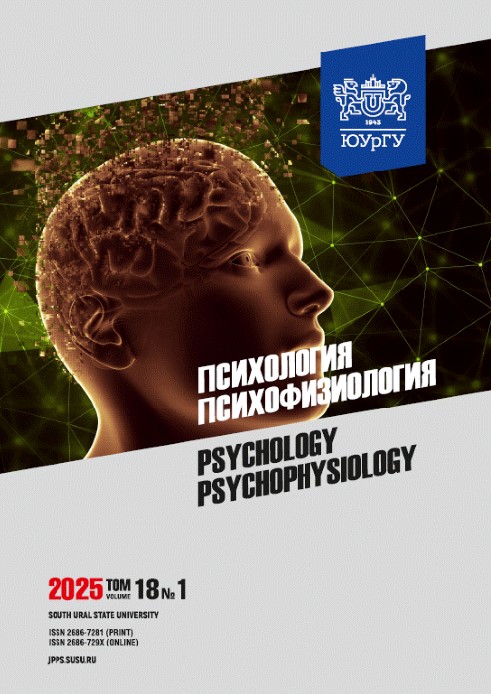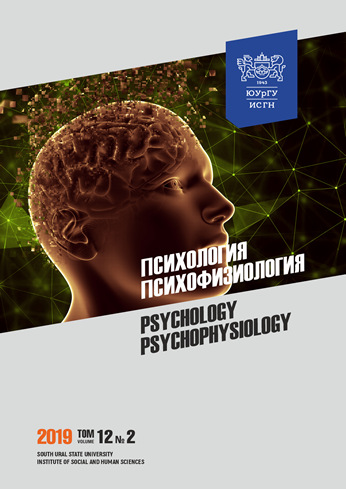A model for managing an athlete's psychoemotional state through chromotherapy
Abstract
Introduction. This study addresses the critical challenge of optimizing athletes’ psychoemotional state to enhance performance, with a focus on innovative intervention strategies. Aims. The primary objective of the study is to develop a theoretical framework for psychoemotional regulation and investigate the influence of chromatic stimuli on athletes’ mental states. Materials and methods. The study presents a systematic review of existing literature, which serves as a basis for subsequent empirical research. Results. The study delineates a four-phase management system, comprising: 1. the assessment of baseline psychoemotional and physiological parameters (diagnostic phase); 2. the controlled application of chromatic and auditory stimuli via immersive sessions (intervention phase); 3. post-intervention analysis of psychological and physiological changes (evaluation phase); 4. the customization of subsequent sessions based on observed efficacy (adjustment phase). Conclusion. The proposed model offers a theoretically grounded approach that necessitates empirical validation across diverse athletic disciplines
Downloads
References
2. Fomenkov M.S. Methods of managing the psycho-emotional state of an athlete by regulating the operation of the “error detector”. Molodoi uchenyi = Young Scientist. 2024;13(512):343–349. Available at: https://moluch.ru/archive/512/112283/ (accessed: 30.08.2024) (in Russ.).
3. Akopyan A.O., Kulagina L.A. Optimisation of functional states in elite combat sport athletes based on psychoemotional state management during centralised training. Vestnik sportivnoi nauki = Sports science bulletin. 2010;1:4–7. (in Russ.).
4. Kandinsky V.V. Tochka i liniya na ploskosti [A point and a line on a plane]. Moscow. Publ. house “ABC”. 2024:560. (in Russ.).
5. Sobchik L.N. Metod tsvetovykh vyborov. Modifikatsiya vosmitsvetovogo testa Lyushera: prakticheskoe rukovodstvo [The color selection method. Modification of the eightcolor Lusher test: a practical guide]. St. Petersburg, Moscow. Rech Publ. 2007:128. (in Russ.).
6. Fedotova V.O. Correlation between fantasy and perception in the works by Wilhelm Wundt and Jakob Frohschammer. Nauchnye vedomosti Belgorodskogo gosudarstvennogo universiteta. Seriya Filosofiya. Sotsiologiya. Pravo = Belgorod State University. Scientific Bulletin. Series: Philosophy. Sociology. Law. 2013;16(159),25:317–325. (in Russ.).
7. Sakharov S.P., Suharchenko G.I., Klimenchenko I.A. Comparative characteristics of the use of different color spectra in color therapy in the complex rehabilitation of children with autonomic nervous system dysfunction. Mir nauki. Pedagogika i psikhologiya = World of Science. Pedagogy and psychology. 2021;9(5):40PSMN521. Available at: https://mir-nauki.com/PDF/40PSMN521.pdf. (accessed: 30.08.2024) (in Russ.).
8. Klimenchenko I.A., Sakharov S.P. Correction of the emotional and volitional sphere of children with autism spectrum disorder using color therapy. Nauchnoe mnenie = Scientific opinion. 2020;5:47–57. (in Russ.). DOI: 10.25807/PBH.22224378.2020.5.47.57
9. Bektaeva A.E. Color therapy: psychology of color. Problemy sovremennoi nauki i obrazovaniya = Problems of modern science and education. 2020;2(147):84–92. (in Russ.).
10. Burenkova O.A. The influence of color on the psychophysiological state of personality. Uspekhi sovremennogo estestvoznaniya = Advances in current natural sciences. 2013;10:153–154. (in Russ.).
11. Kuzmin V.G. Two-level perception and color modes. Contrast and complementarity of colors. Filosofskaya mysl = Philosophical Thought. 2021;10:11–21. (in Russ.). DOI: 10.25136/2409-8728.2021.10.36358
12. Griber Yu.A. Man and Color: The Coloristics of the Cultural Landscape. Chelovek = Human. 2024;35(6):108–123. (in Russ.). DOI: 10.31857/S0236200724060078.
13. Tsygankova K.Yu., Griber Yu.A. Visualization of associative rules in the analysis of color communication. Obshchestvo. Sreda. Razvitie = Society. Wednesday. Development. 2023;3(68):53–63. (in Russ.). DOI: 10.53115/19975996_2023_03_053-063.
14. Todorovskaya L.I. An innovative approach to the formation of sensory perception in young children using health-saving technology-color therapy. Nauchnye vyskazyvaniya = Scientific statements. 2023;5(29):36–39. (in Russ.).
15. Olshanskaya S.A., Tishina A.Yu. Color therapy: the essence and significance as a method of recovery in sports activities. Resursy konkurentosposobnosti sportsmenov: teoriya i praktika realizatsii = Resources of athletes competitiveness: theory and practice of implementation. 2020;1:103–105. (in Russ.).
16. Tarabykina A.A., Vitun E.V. Color as a factor influencing the effectiveness of physical culture and sports activity. Aktualnye problemy pedagogiki i psikhologii = Actual problems of pedagogy and psychology. 2023;4(5):40–47. (in Russ.).
17. Kobyskan A.S., Yakovleva E.A. The role of color in the semiotic system of sport. Vestnik Chelyabinskogo gosudarstvennogo universiteta = Bulletin of Chelyabinsk State University. 2020;3(437):73–80. (in Russ.). DOI: 10.24411/1994-2796-2020-10309
18. Allen M.S., Greenlees I., Jones M. Personality in sport: comprehensive review. International review of sport and exercise psychology. 2013;6(1):184–208. DOI: 10.1080/1750984X.2013.769614
19. Voropayev Y. Colour indexation of value orientations of the personality: results of exper-imental investigation. Bulletin of the Odessa National University. Psychology. 2015;20(36):27–34.
20. Caivano J.L. Research on color in architecture and environmental design: Brief history, current developments, and possible future. Color Research and Application. 2006;31(4):350–363. DOI: 10.1002/col.20224
21. Elliot A.J. A Historically based review of empirical work on color and psychological functioning: content, methods, and recommendations for future research. Review of General Psychology. 2019;23(2):177–200. DOI: 10.1037/gpr0000170
22. Pasmanter N., Munakomi S. Physiology, Color Perception. StatPearls. StatPearls Publishing. Treasure Island (FL). 2023. Available at: https://europepmc.org/article/nbk/nbk544355 (accessed: 30.10.2024)
23. Kalkova N.N. Gender impact on consumer perception of packaging colour based on neuromarketing algorithms. Upravlenets = The Manager. 2024;15(2):108–123. (in Russ.). DOI: 10.29141/2218-5003-2024-15-2-8
24. Mishenkina E.V. Color perception and color perception as a gender characteristic. Yaroslavskii pedagogicheskii vestnik = Yaroslavl Pedagogical Bulletin. 2004;1-2(38-39):26–30 (in Russ.).
25. Ismailova R.B., Nurgazy D.B., Rymbekova G.N., Seitbekov D. Emotional state management. Vestnik nauki = Bulletin of Science. 2023;4(3):141–149. (in Russ.).
References on translit
-Copyright (c) 2025 Psychology. Psychophysiology

This work is licensed under a Creative Commons Attribution-NonCommercial-NoDerivatives 4.0 International License.



